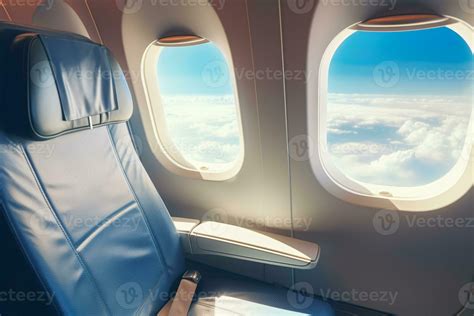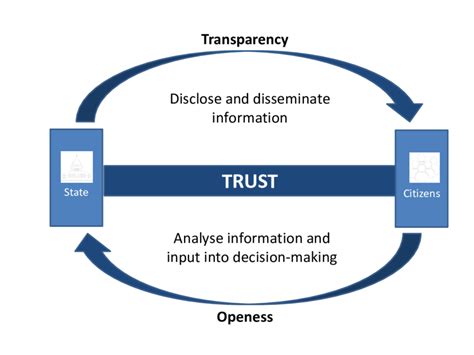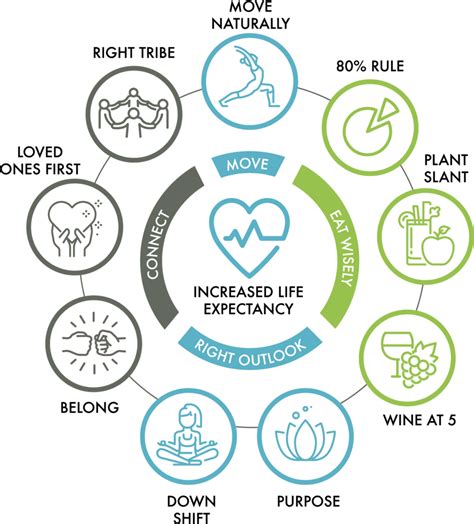
Sitting by the window seat on an airplane might seem like a coveted spot for enjoying the view, but experts warn that it comes with a hidden health risk: increased exposure to radiation. Frequent flyers, especially those who regularly opt for the window seat on long-haul flights, may be subjecting themselves to significantly higher levels of cosmic radiation than their aisle-sitting counterparts.
The allure of the window seat on an airplane is undeniable. Passengers are drawn to the panoramic views of clouds, landscapes, and cityscapes stretching out beneath them. The ability to lean against the window for a nap, coupled with the perceived control over the window shade, further enhances its appeal. However, this popular choice comes with a significant, often overlooked, health consideration: heightened exposure to cosmic radiation. This concern is especially relevant for frequent flyers who accumulate substantial air miles each year and consistently choose the window seat.
Cosmic radiation, originating from the sun and distant galaxies, is a constant environmental factor. On the ground, the Earth’s atmosphere and magnetic field provide a substantial shield against this radiation. However, as altitude increases, the protective effect of the atmosphere diminishes, leading to a corresponding increase in radiation levels. Airplanes, cruising at altitudes between 30,000 and 40,000 feet, place passengers in a region where radiation exposure is considerably higher than at sea level.
The intensity of cosmic radiation at airplane altitudes depends on several factors, including altitude, latitude, and solar activity. Higher altitudes and proximity to the Earth’s poles generally correlate with greater radiation exposure. Solar flares and coronal mass ejections can also temporarily spike radiation levels. While airlines and regulatory agencies monitor these factors and sometimes adjust flight paths to minimize exposure during periods of heightened solar activity, the inherent risk remains.
The critical point raised by experts is that the window seat passenger tends to receive a higher dose of radiation compared to those in aisle seats. This is because the fuselage of an aircraft offers some degree of shielding against radiation. Passengers seated closer to the center of the plane, particularly those in aisle seats, benefit from the added protection of surrounding passengers and cabin infrastructure. Those by the window receive less shielding, leading to increased exposure.
The amount of radiation absorbed during a single flight is generally low. However, the cumulative effect of frequent flights, especially for those consistently in window seats, can become significant over time. Dr. Christopher Baird, an associate professor of physics at West Texas A&M University, explained to Yahoo News that “flying does increase your exposure to radiation.” He further elaborated that “being closer to the metal skin of the plane” results in slightly higher exposure levels.
The actual difference in radiation exposure between window and aisle seats has not been precisely quantified by extensive scientific studies. This is partly due to the complexities of accurately measuring radiation exposure in a dynamic environment and the variability of factors such as flight paths, aircraft type, and solar activity. However, the consensus among experts is that a measurable difference exists, and that frequent window seat passengers should be aware of the potential long-term consequences.
The potential health effects of prolonged exposure to cosmic radiation are well-documented. Radiation is a known carcinogen, meaning it can damage DNA and increase the risk of cancer. Studies on airline pilots and flight attendants, who are occupationally exposed to high levels of cosmic radiation, have shown a slightly elevated risk of certain cancers, including melanoma, breast cancer, and leukemia. While the radiation doses received by passengers are typically lower than those of flight crew, the principle remains the same: cumulative exposure increases risk.
Other potential health effects associated with radiation exposure include cataracts, cardiovascular problems, and immune system suppression. The extent of these effects depends on the dose of radiation received and individual susceptibility factors such as age, genetics, and overall health. Children and pregnant women are considered particularly vulnerable to the effects of radiation, as their cells are dividing more rapidly.
While the risk to the average infrequent flyer is minimal, frequent travelers, especially those who routinely choose window seats on long flights, should take steps to mitigate their exposure. The most obvious measure is to alternate between window and aisle seats or opt for an aisle seat whenever possible. Other strategies include reducing the overall number of flights taken each year, if feasible, and being mindful of flight paths and solar activity.
Several technologies and resources are available to help estimate radiation exposure during flights. Some online calculators allow users to input flight details, such as origin, destination, and altitude, to estimate the radiation dose received. These calculators use models based on atmospheric data and solar activity to provide an approximate assessment. While the accuracy of these tools varies, they can offer a general sense of the relative radiation exposure associated with different flights.
Furthermore, several countries and international organizations have established guidelines and regulations regarding radiation exposure for airline crew and passengers. These guidelines are based on the recommendations of expert bodies such as the International Commission on Radiological Protection (ICRP) and the United Nations Scientific Committee on the Effects of Atomic Radiation (UNSCEAR). Airlines are responsible for monitoring and managing radiation exposure to ensure compliance with these regulations.
The issue of radiation exposure on airplanes highlights the broader importance of radiation awareness in modern life. We are constantly exposed to various sources of radiation, both natural and man-made, including radon gas, medical imaging procedures, and electronic devices. While the doses from many of these sources are relatively low, cumulative exposure can add up over time. Understanding the sources of radiation and taking reasonable steps to minimize exposure is a prudent approach to protecting long-term health.
In conclusion, while the window seat offers appealing views and comfort, it is important for frequent flyers to be aware of the potential for increased radiation exposure. By understanding the factors that influence radiation levels on airplanes and taking simple steps to mitigate exposure, travelers can make informed decisions about their seating choices and protect their long-term health. The occasional indulgence in a window seat view is unlikely to pose a significant risk, but consistent exposure should be carefully considered.
Frequently Asked Questions (FAQs)
1. Is the radiation exposure from flying really dangerous for all passengers?
No, the radiation exposure from flying is generally not considered dangerous for infrequent flyers. The levels of radiation encountered during a single flight are typically low. However, frequent flyers, especially those who consistently sit in window seats on long-haul flights, may accumulate a significant dose of radiation over time, which could potentially increase their risk of health issues. Dr. Christopher Baird notes that “flying does increase your exposure to radiation,” but the context is crucial: the risk is cumulative and more relevant for those who fly very often.
2. How much more radiation do you get in a window seat compared to an aisle seat?
The exact difference in radiation exposure between window and aisle seats has not been precisely quantified by extensive scientific studies. However, the consensus among experts is that passengers in window seats receive a slightly higher dose of cosmic radiation compared to those in aisle seats due to less shielding from the aircraft fuselage and surrounding passengers. The difference is not drastic for a single flight but can accumulate over many flights.
3. What are the long-term health risks associated with increased radiation exposure from flying?
Long-term health risks associated with increased radiation exposure include an elevated risk of certain cancers, such as melanoma, breast cancer, and leukemia. Other potential health effects include cataracts, cardiovascular problems, and immune system suppression. The severity of these effects depends on the cumulative dose of radiation received and individual susceptibility factors such as age, genetics, and overall health. The risks are primarily relevant for those with occupational exposure, such as pilots and flight attendants, and frequent flyers.
4. Are children and pregnant women more vulnerable to radiation exposure during flights?
Yes, children and pregnant women are considered more vulnerable to the effects of radiation exposure during flights. This is because their cells are dividing more rapidly, making them more susceptible to DNA damage from radiation. It is advisable for pregnant women and parents of young children who are frequent flyers to consult with their healthcare providers about potential risks and mitigation strategies.
5. What can frequent flyers do to minimize their radiation exposure while flying?
Frequent flyers can take several steps to minimize their radiation exposure:
- Choose aisle seats: Alternate between window and aisle seats or opt for an aisle seat whenever possible to benefit from increased shielding.
- Reduce flight frequency: If feasible, reduce the overall number of flights taken each year.
- Monitor flight paths: Be mindful of flight paths, as flights closer to the Earth’s poles generally involve higher radiation exposure.
- Consider solar activity: Be aware of solar flares and coronal mass ejections, which can temporarily spike radiation levels, although airlines typically adjust flight paths as needed.
- Use radiation calculators: Utilize online calculators to estimate radiation exposure during flights.
- Consult with a healthcare professional: Discuss concerns and potential risks with a healthcare provider, especially if you have underlying health conditions or are pregnant.
6. What is cosmic radiation and why is it more intense at higher altitudes?
Cosmic radiation originates from the sun and distant galaxies. It consists of high-energy particles that constantly bombard the Earth. On the ground, the Earth’s atmosphere and magnetic field provide a substantial shield against this radiation. However, as altitude increases, the protective effect of the atmosphere diminishes. Therefore, airplanes cruising at high altitudes experience much higher levels of cosmic radiation compared to sea level. The intensity also varies with latitude, with higher exposure near the poles due to the magnetic field configuration.
7. How do airlines monitor and manage radiation exposure for their crew and passengers?
Airlines are responsible for monitoring and managing radiation exposure to ensure compliance with established guidelines and regulations. They rely on atmospheric data, predictive models, and real-time monitoring of solar activity to assess radiation levels along flight paths. Some airlines may adjust flight routes or altitudes to minimize exposure during periods of heightened solar activity. They also keep records of flight crew members’ cumulative radiation exposure to ensure it remains within safe limits, as determined by regulatory bodies such as the International Commission on Radiological Protection (ICRP).
8. Are there any international standards or regulations for radiation exposure in aviation?
Yes, several countries and international organizations have established guidelines and regulations regarding radiation exposure for airline crew and passengers. These guidelines are based on the recommendations of expert bodies such as the International Commission on Radiological Protection (ICRP) and the United Nations Scientific Committee on the Effects of Atomic Radiation (UNSCEAR). These organizations provide dose limits and recommendations for monitoring and managing radiation exposure to ensure the safety of aviation personnel and the public. The specific regulations and enforcement mechanisms vary from country to country.
9. Besides cosmic radiation, are there other sources of radiation exposure during air travel?
While cosmic radiation is the primary source of increased radiation exposure during air travel, there are also minimal contributions from the aircraft’s equipment, such as radar systems, and from naturally occurring radioactive materials (NORM) in the aircraft’s structure. However, these sources contribute negligibly compared to cosmic radiation at flight altitudes. The most significant factor remains the altitude-related increase in cosmic radiation.
10. What research has been done on the health effects of radiation exposure on airline personnel?
Several studies have investigated the health effects of radiation exposure on airline pilots and flight attendants, who are occupationally exposed to higher levels of cosmic radiation than typical passengers. These studies have shown a slightly elevated risk of certain cancers, including melanoma, breast cancer, and leukemia, among airline personnel compared to the general population. However, the increased risk is generally small and may be influenced by other occupational factors, such as irregular sleep patterns and exposure to other chemicals. Ongoing research continues to monitor the long-term health outcomes of airline personnel and refine risk assessment models.
11. How accurate are online radiation calculators for estimating radiation exposure during flights?
Online radiation calculators provide estimates of radiation exposure based on flight details such as origin, destination, altitude, and flight duration. These calculators use models that incorporate atmospheric data, solar activity, and geomagnetic field information. While they can provide a general sense of the relative radiation exposure associated with different flights, their accuracy is limited by the complexity of modeling cosmic radiation and the variability of solar activity. The estimates should be considered as approximations rather than precise measurements.
12. Does the type of aircraft affect radiation exposure levels?
Yes, the type of aircraft can influence radiation exposure levels to some extent. Larger aircraft may offer slightly more shielding due to their construction, and the altitude at which an aircraft typically cruises can also affect exposure. However, the primary factor influencing radiation exposure remains altitude, followed by latitude and solar activity. The specific design and materials used in aircraft construction can have a minor impact, but this effect is less significant than the other factors.
13. Is there a difference in radiation exposure on polar routes compared to non-polar routes?
Yes, flights on polar routes generally involve higher radiation exposure compared to non-polar routes. This is because the Earth’s magnetic field provides less shielding against cosmic radiation near the poles. The intensity of cosmic radiation is greater at higher latitudes, meaning flights that traverse polar regions will typically expose passengers and crew to higher doses of radiation. Airlines often monitor solar activity and may adjust polar routes to minimize exposure during periods of heightened solar activity.
14. What role does solar activity play in radiation exposure during air travel?
Solar activity, including solar flares and coronal mass ejections, can significantly increase radiation levels in the Earth’s atmosphere and in space. During periods of heightened solar activity, the flux of high-energy particles reaching the Earth increases, leading to higher radiation exposure at flight altitudes. Airlines and regulatory agencies monitor solar activity and may issue warnings or adjust flight paths to minimize exposure during these events. Geomagnetic storms associated with solar activity can also affect radiation levels, particularly in polar regions.
15. Can passengers request information from airlines about radiation exposure on their flights?
While airlines are responsible for monitoring and managing radiation exposure for their crew, providing detailed radiation exposure information to individual passengers is not standard practice. However, passengers can inquire about the measures airlines take to monitor and minimize radiation exposure. Some airlines may provide general information about flight paths and altitude adjustments made to mitigate exposure during periods of heightened solar activity. Passengers can also use online radiation calculators to estimate their exposure based on flight details.
16. What are the symptoms of acute radiation exposure, and how do they differ from the effects of chronic exposure?
Acute radiation exposure refers to a high dose of radiation received over a short period, while chronic exposure refers to prolonged exposure to lower doses of radiation over a long period. Acute radiation exposure can cause a range of symptoms, including nausea, vomiting, fatigue, skin burns, and in severe cases, radiation sickness, which can be life-threatening. The severity of the symptoms depends on the dose of radiation received. Chronic radiation exposure, on the other hand, may not cause immediate symptoms but can increase the risk of long-term health effects, such as cancer, cataracts, and cardiovascular problems. The cumulative effect of chronic exposure is the primary concern for frequent flyers.
17. Are there any dietary supplements or other interventions that can protect against radiation exposure during flights?
There is no proven dietary supplement or intervention that can completely protect against radiation exposure during flights. Maintaining a healthy lifestyle, including a balanced diet, regular exercise, and adequate sleep, can support overall health and resilience, but it will not significantly reduce the risk of radiation-induced damage. Some studies have explored the potential protective effects of antioxidants and other nutrients against radiation, but the evidence is limited, and further research is needed. The most effective strategies for minimizing radiation exposure are those related to flight choices and seat selection, as mentioned previously.
18. How does the radiation exposure from flying compare to that from medical imaging procedures, such as X-rays and CT scans?
The radiation exposure from a single flight is generally much lower than that from medical imaging procedures like X-rays and CT scans. A typical chest X-ray exposes a person to approximately 0.1 millisieverts (mSv) of radiation, while a CT scan can deliver doses ranging from 2 to 10 mSv or more. A long-haul flight might expose a person to 0.02 to 0.05 mSv. However, the cumulative exposure from frequent flights can approach or even exceed the dose from some medical imaging procedures over time. It is important to consider all sources of radiation exposure when assessing overall risk.
19. What is the role of the Earth’s magnetic field in protecting against cosmic radiation?
The Earth’s magnetic field, also known as the geomagnetic field, plays a crucial role in deflecting charged particles from cosmic radiation, reducing the amount of radiation that reaches the Earth’s surface. The magnetic field is strongest near the equator and weakest near the poles, which is why radiation exposure is generally higher at higher latitudes. The magnetic field also interacts with solar wind, a stream of charged particles emitted by the sun, deflecting most of it away from the Earth. Geomagnetic storms, caused by disturbances in the magnetic field due to solar activity, can temporarily weaken the shielding effect, leading to increased radiation levels.
20. How are radiation risks communicated to airline passengers and crew? What are the ethical considerations?
Currently, there is no standardized way to communicate radiation risks to airline passengers. Airlines provide safety briefings that address other potential hazards, but radiation exposure is typically not mentioned. For crew members, airlines are required to monitor and manage radiation exposure and provide information on occupational hazards. The ethical considerations revolve around transparency and informed consent. Passengers have a right to know about potential health risks associated with air travel, including radiation exposure, even if the risk is relatively low. However, communicating these risks effectively without causing undue alarm is a challenge. There is a need for clear, accurate, and accessible information on radiation exposure during air travel so that passengers can make informed decisions.









